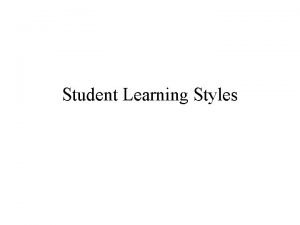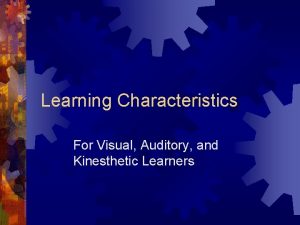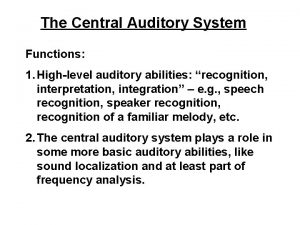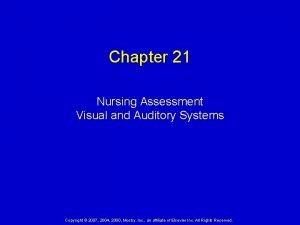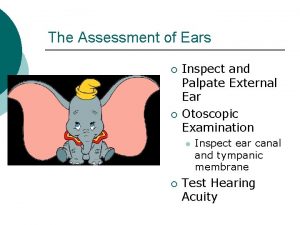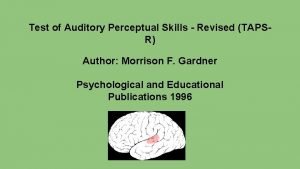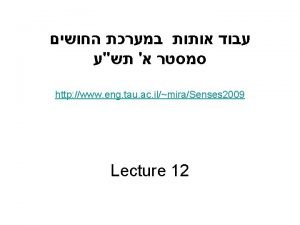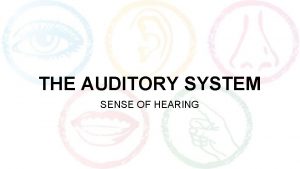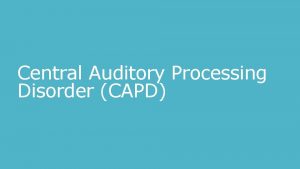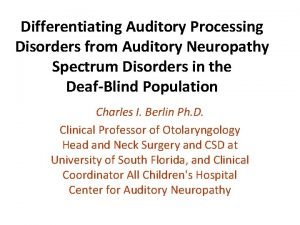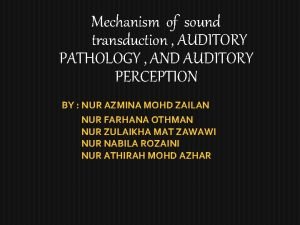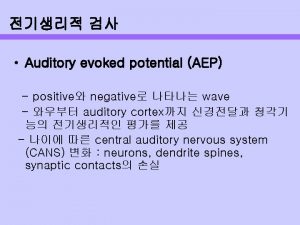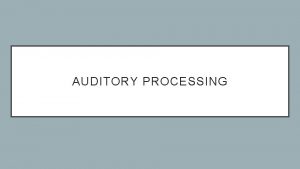CHAPTER 4 SECTION 3 THE AUDITORY SYSTEM Learning










- Slides: 10

CHAPTER 4 SECTION 3 THE AUDITORY SYSTEM Learning Goal Three: Understand how the auditory system registers sounds and how it connects with the brain to perceive it.

The Nature of Sound and How We Experience It � Sounds waves are vibrations in the air that are processed by the auditory system. � Wavelength determines the frequency of the sound wave or the number of cycles that pass through a point in a given time. � Pitch is the perceptual interpretation of the frequency of a sound. High-frequency sounds are perceived as having high pitch, such as with a soprano voice. Likewise, low-frequency sounds have a low pitch, such as with a bass voice. � Amplitude is measured in decibels and is the amount of pressure produced by sound waves relative to the standard. � Loudness is the perception of the sound waves amplitude.

Properties of Sound Wavelength (distance between peaks) - determines frequency - perceived as pitch - some wavelengths cannot be perceived Amplitude (height of wave) - perceived as loudness Mixture of Wavelengths; Complex Sounds - perceived as timbre / tone saturation © 2011 The Mc. Graw-Hill Companies, Inc.


Parts of the ear � � � https: //www. youtube. com/watch? v=o. Nc. URLG 0 Xmo The working ear https: //www. youtube. com/watch? v=fl. IAx. Gs. V 1 q 0


Theories of Hearing � � � Place theory is when each frequency produces vibrations at a particular spot on the basilar membrane. A high-frequency sound stimulates a specific part of the basilar membrane; however, a low-frequency sound causes a large portion of the basilar membrane to be displaced. Frequency theory states that the perception of a sound’s frequency depends on how often the auditory nerve fires. High-frequency sounds cause the nerve to fire more so than low-frequency sounds. The volley principle is when a cluster of nerve cells fire neural impulses in rapid succession that produce a volley of impulses.

Auditory Processing in the Brain � Once information is picked up from the environment it must move on to the brain for interpretation. � Information about sound moves from the hair cells of the inner ear to the auditory nerve, which then carries the neural impulses to the brain.

Localizing Sound � A sound coming from the left reaches the left ear faster than it reaches the right ear. � The sound reaching the closer ear is more intense because it did not have to travel as far and also because the other ear is in the sound shadow of the listener’s head. � Differences in the timing of the sound and the intensity of the sound help a person to locate a sound.

Homework: � Read pages 120 to 126 and make detailed notes. Also Draw and label the parts of the ear from pages 122, 123 &4 T-3 � Look ahead: Read pages 126 -132 & 132 -133 & make detailed notes
 What is auditory learning
What is auditory learning Characteristics of kinesthetic learners
Characteristics of kinesthetic learners Learning style auditory
Learning style auditory Function of auditory system
Function of auditory system Bser aer
Bser aer Visual assessment nursing
Visual assessment nursing Cuadro comparativo e-learning m-learning b-learning
Cuadro comparativo e-learning m-learning b-learning External auditory meatus
External auditory meatus Auditory digital
Auditory digital Test of auditory perceptual skills
Test of auditory perceptual skills Sexual tactile hallucinations
Sexual tactile hallucinations
